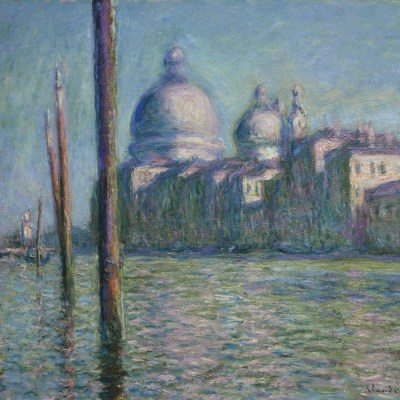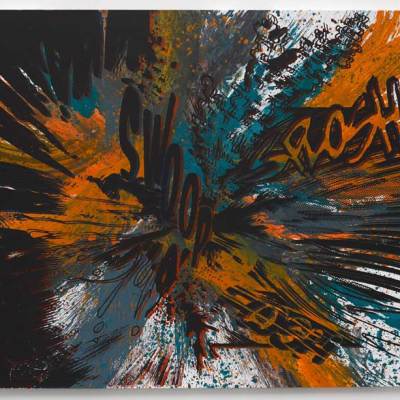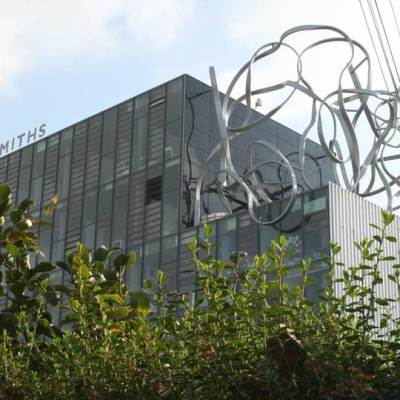At its best, Christian Marclay’s work explores combinations of sound and image that are deceptively simple and deeply seductive. His Video Quartet (2002), for instance, brings together 700 film clips about music and sound to build a rich cinematic symphony. Most famously, Marclay’s The Clock (2010) – a work so popular (and so heavily hyped) that MoMA gave it a Twitter account – is a captivating 24-hour assemblage of movie scenes concerning time that is synchronised to its local setting.
Unfortunately, in this new White Cube exhibition (Marclay’s first UK solo show since The Clock drew crowds) there’s only one work that stands alongside the artist’s finest achievements: the immersive animated installation Surround Sounds (2014). In a darkened and specially sound-proofed space, four giant projections screen a rapid, flickering series of onomatopoeic comic-book phrases that move in eerie and absolute silence. RUMBLE staggers across the screens, TAP bounces like piano keys and MMMMM murmurs along the edges. The work is especially thrilling when all four projections suddenly feature the same cluster of phrases or graphics, covering our entire field of vision with an exuberant, streaming ticker-tape parade. Surround Sounds is brilliantly choreographed and immaculately presented – another impressive project born out of Marclay’s obsessive cultural cataloguing.
Elsewhere, the new work on display is much less exhilarating. Pub Crawl (2014) consists of 11 video projections displayed along the gallery’s central corridor. Shot with a hand-held camera, they show the artist using a pen or his trainer to coax sounds from various bottles, cans and glasses lying on the pavements and window ledges of east London, where Marclay has lived since 2007. The result is an aural and visual map of the morning after the night before, with a clinking, clanking soundtrack produced from urban detritus. It’s a rather gentle and well-mannered response to British drinking habits, but Pub Crawl is neither intoxicating (like a good drink or like Marclay’s most compelling videos) nor queasy and melancholic (like a bad hangover or like Ed Atkins’s recent booze-soaked show at the Serpentine).
In an adjacent room to Pub Crawl, Marclay presents a series of found musical scores for songs about drinking that are displayed behind partially distorted glass so that their central phrases are blurred – a one-note gag that definitely drags over the course of 16 rounds. There’s also a large performance space, where musicians will appear at various weekend events during the show, containing hundreds of empty glasses on a wraparound ledge.
Marclay’s new paintings and prints are the biggest disappointment, though. They also employ the language and visuals of comic books, with giant waves and splashes of colourful acrylic paint covered with screen-printed phrases such as SPLAT and SPLOOSH. These works, especially those on canvas, have an odd texture, with the cartoonish words appearing ready to crumble at any moment. While several reviewers have repeated the press release’s claim that these paintings somehow bridge Abstract Expressionism and Pop Art, it’s difficult to see what Marclay’s gesture adds to our understanding of either movement, other than cracking a crude art-historical joke. Despite the inclusion of energetic and inventive terms (FROOSH and SPLOOCH were new to me), there’s also not much fizz in these paintings – they seem strangely dull, faded or even drained in places. Perhaps, then, they constitute a more ambivalent response to forms of graphic exuberance. There’s certainly little Pop vitality here or the hypercolour sheen that characterises much contemporary painting. Indeed, rather than WOOOSH or WHUPP, PATCHY is what came to my mind – and it’s a term that might serve as a useful description for this entire show.
Christian Marclay is at White Cube Bermondsey until 12 April.



